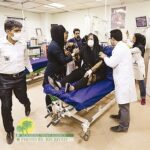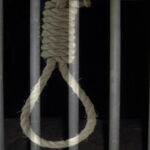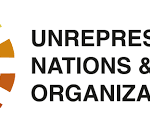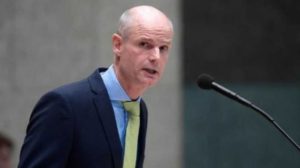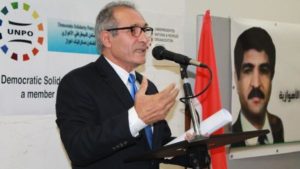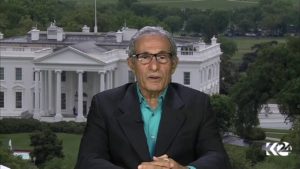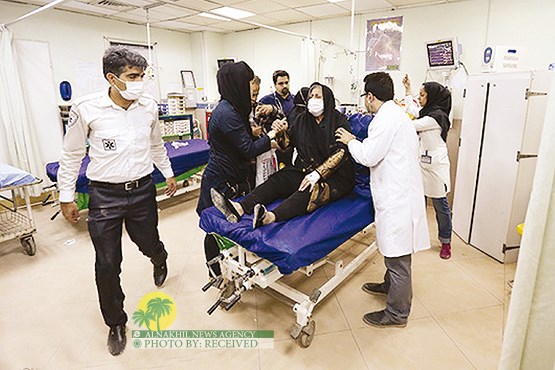Dr.Karim Abdian represent Al-Ahwaz Alliance (DSPA, AHRO, Ahwaz Civil Society)
in the fourth New World Summit in Brussels which hosts more than twenty stateless political organisations.
Dr. Karim Abdian Bani Said the Executive Director of Ahwaz Human Rights Organisation participated in the international conference discussing self determination of stateless organization. The conference was held during the 19th to 21st of September.
Dr. Abdian discussed the need to grant the right of self-determination to the Arab people of Ahwaz in accordance with the international laws and because of the lack of legal recognition or political representation in the Iranian state. Arabs in Ahwaz suffer from human rights violations and discrimination and are subjected to ethnic cleansing by the Iranian officials.
NEW WORLD SUMMIT – BRUSSELS 19-21 September 2014
The Fourth New World Summit: Stateless States
Oppressive States: Ahwazi-Arab Nation, A People Negated by the State
Friday 19 September 2014
Karim Abdian
Al-Ahwaz Alliance (DSPA, AHRO, Ahwaz Civil Society)
Before I begin, on behalf of our delegation and on behalf of Ahwazi-Arab Nation, I would like to thank The World New Summit leadership Robert Kluijver, Vincent Van Gerven Oei and especially Younes Baundi and TRene In Der Maur , and UNPO and other sponsors and supporters. And others those who helped organize this symposium.
In the short time allocated, I will try to provide you with some historical background of the Ahwazi-Arab nation, the current situations as far as human rights violations and some examples of cultural genocide and ethnic cleansing, and finally I will conclude with the WAY FOWARD, right of a people or a nation to self determination under the current international law.
Historical Background:
One of the six major ethnic groups that constitute Iran is the Indigenous Ahwazi Arabs of Iran. Located in the geopolitically sensitive and oil-rich Khuzestan province – called Arabistan by the Safavid in early 16th century and changed by Reza Shah in 1936 to Khuzestan – neighboring Iraq to the East.
Arabs in Iran are about 10% of the population; Ahwazis constitute an indigenous, ethnic, national and linguistic minority in Iran. A population of 6-8 million.
About 5000 years ago, long before the Achaemenid left Russia and headed toward the Iranian plateau, a Semitic nation by the name of Elamite lived in today’s Khuzestan. They have left their blooming civilization footprints in the ruins of Susa, Ghagharzanbill and other parts of Khuzestan, Lurestan and Fars.
Ahmad Kasravi, a well respected Iranian historian, in his famous book “The 500 hears history of Khuzestan” writes, with references from Tabari history book “but it is certain and there is proof that during the Parthian era (247 BC – 224 AD) Arabs (Ahwazi) have lived in Khuzestan and other parts of southern Iran, since the Parthian era of some 4000 years ago.
Other historians such as Mohammad Ibn Jarir al-Tabari, (c-839-923 Baghdad) the early Islamic era historian, Bin Batota ( 1304-1364), Ali ibn Athir travel books, as well as many other historians such as bin abi Yaaghobi, ibn Haghol, Estakhri, Nasser Khssrow, ibn Balkhi, el-Kamil, Habib al-Sair, Askendar Beg, Najm al molik Ghafari and others, in one way or another, reference the existence of Indigenous Ahwazi Arabs in Eghlim (region) of al-Ahwaz or Arabistan.
This was, more or less, the situation up until the Qajar era when Iran was made up of autonomous, independent or semi- independent regions called Mamalek-e-Mahrooseh (protected Countries). Each region/country was ruled by a Valli (governor), in a federated or a confederated arrangement.
The Persians mainly lived, and still live, in the central and eastern provinces; the Azeri Turks in western and eastern Azerbaijan, Ardabil and Zanjan; the Kurds in Kurdistan, western Azerbaijan, Kermanshah, and Ilam and the Arabs in Southwestern Iran., the Baloch in southeastern provinces of Sistan and Balochestan and the Turkman in the Northeast.
Post-Islamic scope of Aghlim al-Ahwaz shows that the area was a part of the Islamic empire. The Islamic empire covered Iran, the Indian subcontinent, the Arab world, east and central Asia and Turkey.
In the early years of the Abbasid rule the Ahwazi Bani Assad, and the Arab Al-Buea tribe, which still lives in al-Ahwaz (Khuzestan), was ruling Ahwaz and surrounds.
In the 2nd half of the 9th century (15th century A.D.) Muhammad Ibn Faalah Mashaashai started his rule in Howeizieh and surrounds. Later, he and his son Ali ibn-Muhammad Mashaashai expanded their rule to all of Khuzestan, Lurestan, Kahgolia, Kerman Shah, Bahrain and southern Iraq. Ahwazi-Mashaasiai rule during this period was totally independent of Iran and the Othman’s.
It was from this era (1503) onward, during the Safavid dynasty that the area came to be known as Arabistan, signifying its Arab character as well as its Arab inhabitants.
By the end of the 18th century, the Bani Kaab tribe replaced the now weak Mashaashaid as the new rulers of al-Ahwaz (Khuzestan).
In the 2nd half of the 19th century Nasser al-Din Shah (king of Iran) ordered and formed an alliance with Sheikh Jabir al-Kabbi the father of sheikh Khazaal and sheikh Mazaal and the governor of al-Mohammarah to fight the British troops on his behalf. The Qajar king, acknowledged the autonomy and independence of emirate of Arabestan with Mohammarah City (currently called Khorramshahr) as and its capital that had a local government and laws of its own.
According to American historian, William the, Strunk, in his book titled: “The Reign of Shaykh Khaza”l Ibn Janir and the Suppression of the Principality of Arabistan: A study of British Imperialism in Southwestern Iran”, prior to the discovery of oil in the region in 1908, 98% of the inhabitants were Arabs.
Sheikh Mazaal succeeded his father, Sheikh Jabir, in becoming the ruler of the area. Sheikh Khazaal succeeded his brother and extended his rule to include the eastern part of Khuzestan and added Shoshtar and Dezful to his domain. Although never officially negating his allegiance to the Tehran government, he did rule with complete autonomy.
In 1924 Khazaal announced his rebellion against Reza Khan (Reza Shah
Pahlavi). He stated his case to the League of Nations, but his efforts were a
Failure due to the British switch of protection to Reza Shah. Reza Shah used deception when he failed to achieve a military victory over Prince Khazaal. He kidnapped Sheikh Khazaal, imprisoned and later killed him in Tehran in 1936
After the emergence of Reza Shah and by enforcing centralization, in 1925, he invaded Arabestan, overthrew the local administration, occupied and destroyed Arabistan’s sovereignty, and subordinated the province to Iran against the wishes of its Arab inhabitants and without their involvement.
Thus the Iranian government was able to put an end to the last autonomous province and emirate in the area and bring Arabestan (Al-Ahwaz) under its control. In 1936 Reza Shah changed the name of Arabestan to Khuzestan, after over five centuries.
. The state adopted Farsi (Persian) as the official language, which is even now spoken by less than 40% of the total population. The government shut down the schools and banned Arabic education in the province where about 90% of the people were native Arabic speakers. – The second Pahlavi continued the same nationalistic ant-Arab policy as his father.
For the past 89 years since the annexation of Al-Ahwaz homeland, Ahwazi –Arab nation has not recognized, the Iranian government as their legitimate representative in any international fora.
The successive regimes in Iran have deliberately kept the Ahwazi nation backward.
We have been subjected to the eradication of our national identity, our culture, language, and customs; and faced with forced assimilation and imposition of Persian language and culture on an unprecedented level. Our children are being deprived from the use and study of their mother language and our people are being denied their social and political rights, particularly women.
While Ahwazi land accounts for 90% of Iranian oil production, Ahwazi-Arabs live in abject poverty. No part of the oil revenue – none, 0% – is allocated to our area or to our people. Again, a common practice between the previous monarchist and the current clerical regime.
After the overthrow of the Shah, Arabs of Al-Ahwaz (Khuzesatn) took an active role in the 1979 revolution. Teachers, clerics, students, intellectuals, and oil worker all participated in the struggle against the Shah. Many of them were killed in that struggle. The Arab petroleum workers of Khuzestan, who went on strike to hasten the downfall of the Shah, played a prominent role in the 1979 Iranian Revolution.
Current Situations and abuse of human rights and ethnic cleansing Ahwazi Arabs.
For the past 89 years, the past Iranian monarchist and the current clerical regimes put Ahwazi-Arab nation under political, cultural, social and economic subjugation. These regimes stripped indigenous Arabs of Ahwaz from their human rights and lowered their status to the ranks of 2nd and 3rd class citizens. Thus, the Ahwazi nation endured one of the most brutal national persecution and ethnic cleansing.
The policies of the Islamic Republic, like its predecessor, are based on the elimination of the national identity of Ahwazi-Arabs, and to a lesser degree, other nationalities such as the Turks, Kurds, Bloch and Turkmen. The aim is “Persianization” or “Farsization”, where everything must be Persian. This policy is based on a supremacist and a chauvinist ideology aimed at the elimination of non-Persian cultures, especially the identity and culture of indigenous Arabs.
Socio-political structure of Iranian society is designed and subscribed to, and serves, the view that Iran is one nation with one language and one religion and one identity- but in fact Iran is the most diverse country in the region. A multinational state that is comprised of six major nationalities including Arabs, Baluchistan, Kurds, Persians, Turks, Turkmen and smaller groups of other ethnic/linguistic and tribal groups. While no one ethnic group has a numerical majority nationwide, each nationality and ethnic group is the majority in its own homeland. Iran is also home to Sunnis, Christians, Jews, Bahis, Manadis, Zurestorians, Yasai and others religous minorities.
These ethnic and religious groups comprise at least 50 to and by some estimates 65% of the population. Yet these groups have not been accorded equal citizenship – They are not being officially acknowledged. By constitution, Persian language is the sole official language, and –Jafari Shiai is the official religion- all others are ignored, oppressed, negated or at best marginalized. According to Mr. Hajbabaei, former deputy minster of education, only 30% of Iranian 1st graders entering school speak Farsi.
Using Shia theology and Persian literature, history, language and the education, the regime, strategically and deliberately, privileges one ethnic group over others, thus creating, inequality, exclusion, animosity and factionalism among various ethnic groups, hence stifling solidarity and any chance of democratic transformation. But by being silent on these issues, Iranian media, writers, poets and intellectuals are in fact accomplices to this perpetual ethnic and religious oppression.
There cannot be equal citizenship without equality in the use of languages, religions, cultural and equal human rights of all citizens, and individual and collective rights.
Banning of non-Persian languages corresponds to banning their literatures and cultures- inducing and creating unequal, degreed citizenship. Promoting aggressive nationalism in Iran – by the current, as well as the previous Pahlavi regime, by formulating the so called Iranian nations, meaning and using it synonymously as Persian nation- this aggressive nationalism often times manifest itself in anti-Arab racism, holding Ahwazi-Arabs of Iran accountable for so called lost mythical civilization and introduction of Islam to Iran.
I learned the pain and the agony and lack of identity by not being able to communicate, read and write in my own mother language. I remember my parents had to take a Farsi speaker in confronting the school administrators, a police officer or a judge in the court.
Ahwazi-Arab people have been one of the most excluded constituent nationalities in Iran and Socio-economically, rank at the very bottom.
Arab demands for basic human rights, including education in our mother tongue, social and economic justice has often been labeled as “separatist”, “secessionist”, “Wahabis” or called “stooges of foreign countries” or “danger to territorial integrity”.
Systematic “Arabsirtzi” or ant-Arab campaign to strip indigenous Arabs of Ahwaz from their national Arab identity, culture, language, and history is prevalent not only in the in the official circles and the Iranian media, but among a segment of the general population as well.
The Islamic Republic government, under president Rouhani, continues the forced resettlement policy to force the Arab population out of Arabistan by providing economic incentives and enticements to settlers from provinces of Isfahan, Yazd and Rafsanjani. As in the previous regime, governor general of Khuzestan, all other province’s political, military and security commanders and officers, mayors and all high and mid-level government officials of Khuzestan have consistently been appointed from non-Arabs outside of the native Arab population. We haven’t had an Arab governor for a majority Arab province for the past 89 years. Names of cities, towns, villages, rivers and other geographical landmarks were changed from Arabic to Persian during the previous Pahalavi regimes.
Now, as under Ahmadinejad, and ironically especially in the past year since the election of Mr. Rouhani, the regime intensified its campaign of repression against Arab freedom fighters, human rights and political activists by officially and publically executing over 30 Arab activists including writers, poets, high school teacher, including Mr. Shabani and Mr, Rasehedi, well known Arab writers and civil rights leaders, last year- 12 Ahwazi-Arab activists, were executed and/or hanged publicly in the past 6 moths alone – 3 more awaiting execution.. There is an appeal by UN joint UN Special rapporteurs to halt their executions.
Mullah’s treatment of the Ahwazi Arabs belies the regime’s professed solidarity with the Palestinians and with poor and dispossessed in the Arab world. Displaced from their traditional lands and crowded into slums, the Ahwazi Arabs endure human development indicators that fall well below those of the Iranian national average. Illiteracy among Ahwazi Arab men is around 50-60 per cent for men, higher for women, compared to 14-18% for Iran.
Added to this are the lingering effects of the Iran-Iraq War, with landmines continuing to kill and maim Arab farmers and contamination from chemical weapons leading to high rates of birth deformities. Levels of poverty among Ahwazi Arabs outstrip many African countries yet; this African level of deprivation are occurring in a province that is the second highest OPEC oil producer and has more oil wealth than the UAE and Kuwait combined.
Institutional racism has recently escalated into full-scale ethnic cleansing and violent repression against an awakened Ahwazi-Arab nation. Despite constitutional guarantees of equality, Amnesty International states that Ahwazi Arabs have “reportedly been denied state employment under the gozinesh criteria. Many villages and settlements reportedly have little or no access to clean running water, sanitation or other utilities such as electricity … land expropriation by the Iranian authorities is reportedly so widespread that it appears to amount to a policy aimed at dispossessing Arabs of their traditional lands. This is apparently part of a strategy aimed at the forcible relocation of Arabs to other areas while facilitating the transfer of non-Arabs into Khuzestan and is linked to economic policies such as zero interest loans which are not available to local Arabs.”
In a visit to Khuzestan in July 2005, UN Special Rapporteur on Adequate Housing Miloon Kothari verified the fact that land confiscation was been conducted to set up housing and industrial projects that excluded the Ahwazi Arabs. He said: “…when you visit Ahwaz…there are thousands of people living with open sewers, no sanitation, no regular access to water, electricity and no gas connections… why is that? Why have certain groups not benefited? … Again in Khuzestan, …we drove outside the city about 20 km and we visited the areas where large development projects are coming up – sugar cane plantations and other projects along the river – and the estimate we received is that between 200,000 – 250,000 Arab people are being displaced from their villages because of these projects. And the question that comes up in my mind is, why is it that these projects are placed directly on the lands that have been homes for these people for generations? I asked the officials, I asked the people we were with. And there is other land in Khuzestan where projects could have been placed which would have minimized the displacement.”
Ethnic cleansing has been stepped up under the Ahmadinejad administration with the creation of the 155 sq km Arvand Free Zone, a military-industrial zone along the border with Iraq’s Basra province. Entire villages are being eradicated to make way for petrochemical projects that will profit only the ruling mullahs and their friends in the Chinese business community who are investing heavily in the zone. The now banned Hamsayeha newspaper has reported complaints from Arabs living on Minoo Island – where they have cultivated dates for centuries – that agents working for the government and the Arvand Free Zone are bullying them into selling their homes ahead of a planned land confiscation program. Mostafa Motowarzadeh, the Majlis (parliament) member for Khorramshahr, has confirmed the problems facing the farmers. He added that the Iranian authorities were pushing ahead with acquisitions before the end of the official consultation period for the land acquisitions.
The denial of their fundamental human rights is the surest sign that Ahwazi Arabs cannot expect freedom and justice under the Islamic Republic. The question is: what is the alternative?
Confiscation of Arab Land Ethnic Cleansing
The confiscation of indigenous Arab-owned land by the Iranian government has been an established policy since 1925. The confiscated lands are typically given to non-indigenous Arab settlers. In the past fifteen years alone, over 60,000 hectares, and in total some 200,000 hectares of indigenous Ahwazi Farmers land have been forcefully taken over, or legally stolen and given to non-indigenous outside settlers and government trusted agents. This scheme is designed to break up and change the ethnic structure and racial mix of the province. The Islamic Republic government continues the ethnic cleansing, forced assimilation, and forced resettlement policy of the previous government to expel indigenous Ahwazi-Arab population out of Khuzestan by providing economic incentives and enticements to re-settle non- Arab population on the expropriated Arab farmlands. This policy is intended to dilute or de-populate the towns and villages of Khuzestan from indigenous Arabs.
According to semi-official Iranian News Reports, since 2004, the Iranian regime has undertaken a huge settlement project to displace Indigenous Ahwazi Arabs and resettled over a million non-Arab Persians from northeastern provinces to Khuzestan. This scheme under the name of “RAMIN-2 TOWNSHIPS” is officially directed by the Khatami government and is managed by Mohsen Rezaie, a former supreme commander of Iranian Revolutionary Crop, and a current member of the Iranian Expediency Council, a well-known anti-Arab and an ultra-nationalist personality. This project is aimed to resettle and ethnically cleanse 2 million Indigenous Ahwazi Arabs within 10 years. The primary focus is the predominantly towns and villages around the city of Mula-Sani, between Ahwaz-City and Abadan in Khuzestan, where the population is over 90% indigenous Arabs.
The ultimate aim is to change the demographics in Khuzestan and reduce the Arabs from a majority to a minority.
Under a government ethnic cleansing policy called “Hmemyesh Sarzamini” (Land Experimentations), 1.2 million Ahwazis were forcefully displaced to central provinces and 1.5 million non-Indigenous Persian have been resettled in government paid, resettlement towns of Ramin, 1, 2 and 3, Shirin-Shahr in Arab cities and towns of al-Ahwaz or Khuzestan as directed by the highest levels of government of the Islamic republic of Iran, over 450,000 hectares of indigenous Ahwazi farmers land have been expropriated and given to non-indigenous Arab Persian settlers, a scheme designed to break up and change the ethnic structure and racial mix of the province.
More than 200,000 hectares of land owned by Ahwazi Arabs farmers have been confiscated since the 1979 Revolution and given to the government sponsored Sugar Cane Project, an intensive sugar cultivation project. Around 47,000 hectares of Ahwazi Arab farmland in the Jofir area have been transferred to non-indigenous settlers and a further 25,000 hectares have been taken from Ahwazi Arab farmers and given to the government-owned Shilat Corporation and government agencies. More than 6,000 hectares of Ahwazi farmland north of Shush have been taken to “resettle the faithful non-indigenous Persians”, according to directives by the Ministry of Agriculture and the IRGC’s Command. In 2004, the homes of 4,000 Arab residents of Sapidar were destroyed and bulldozed over in 2004 with little or no compensation to make way for a shining new housing development for settlers from Isfahan and Fars, enticed into Khuzestan with zero-interest loans not available to the local Ahwazi Arabs.
Danger of Mines in the Infested Area of Khuzestan
According to the Human Rights Watch 2003 LANDMINE MONITOR Report “ Millions of Land mines remaining from the Iran-Iraq war in the province of Khuzestan, kills and maims Arab inhabitants of Khuzestan in southwestern Iran every day, especially sheep or goat herders and children…” H.R.Watch Monitor Reports says, “Khuzesatn is the most (landmine) infested area” in Iran according to Colonel Amir Mohamadi, Iranian ground forces second-in command.
Today, in 2014, the situations have not changed much since HRW’s report in 2003.
EDUCATION
In most villages of Arab regions there are no schools. While the illiteracy rate among the general non indigenous-Arab population in Iran is about 10%-15%, this rate among Arab men in Khuzestan is over 60% and among Arab women is even higher. In non-industrial rural areas such as Fallahieah (Shadegan), this rate among women is close to 100%.
The average malnutrition rate for Iran is 11%, but in the Arab district of Susangerd the level is around 80%. Unemployment among Ahwazi Arabs is around 50 per cent, compared to Iran’s national average of 12 per cent.
Ahwazi Arab students drop out of schools at 30% during elementary, 50% during secondary and 70% during high school because they are forced to study a so called official language, a language that is not their native. Not surprisingly, this is the outcome of an imposed single-language educational system in a multi-lingual, multinational/multicultural society. This policy has led to economic deprivation, political sidelining, and negation of cultural identity.
In the University of Shaheed Chamran in Ahwaz, out of about 30,000 students, only about 2000 Arabs, in a city with at least 70 is Arab.
The dominant body of national (Persian) literature in universities as in secondary education is overtly racist and anti-Arab in nature.
According to an informal survey, 80 to 90% of prominent Persian writers and poets are anti-Arab and have insulted Arabs and Arab culture in their work. We can see this bias very clearly in the works of the following contemporary writers and poets: Talboff, Mirza Fathali Akhond Zadeh, Foroughi, Mahmoud Afshar, Eshghi, Ferah Vashi, Zabeeh Behrooz, Malek al Sho’ara Bahar, Said Nafisi, Zarrin Koob, Sadegh Hedayat, Akhavan Sales and Esmaei Khoei and others. Chauvinistic writers also have targeted our Turkish compatriots.
Ahwazis cannot wear their national and ethnic dress and costume in official centers. They are a people ignored, they are non-official.
Twenty-six years after the war with Iraq, the Arab-populated border cities destroyed during the Iran-Iraq war have largely been untouched. Because this helps perpetuates the policy of assimilation and ethnic cleansing.
Diversion of Rivers that Cross Arab Land
The regime erected dams and diverted the waters of our rivers such as Karoon River to non-Arab areas provinces of Isfahan, Yazd and Kerman. This diversion takes place while Khuzestan severely suffers from the shortage of drinking water. Thus depriving the desperately needed agricultural and drinking water to Arab farmers.
PRESS:
The regime does not permit any genuine Arabic newspapers or any other types of media in Khuzestan. Ahwazis are excluded from the scene in the press and mass media. Instead, we see a systematic campaign of hatred and misrepresentation of indigenous Ahwazi Arabs in Iranian media; again a common denominator of the previous and the current regime.
The ministry of “Culture and Islamic Guidance” receives an average of 30 application requests from Ahwazi Arabs for publication rights of Arabic or Arabic-Persian periodicals. Article15 of Iranian constitution allows publication in local languages.
In school textbooks, both history and literature, one encounters many instances of offensive language against other nationalities, in particular anti-Arab and anti-Turk remarks. This kind of language only breeds racism, contempt, and intolerance against non-Persians. Ultra-nationalists substituted the word Iranian with Persian
Iranian government authorities in Khuzestan refuse to register and issue birth identity cards to indigenous Arab newborn-babies who do not assume Persian or Shiite names.
Names of cities, towns, villages, rivers and other geographical landmarks were changed from Arabic to Persian during the previous Pahlavi regimes. These historical Arabic names existed for centuries. The regime refuses to consent to the Ahwazi Arabs’ request to change the names of these landmarks back to their historical Arabic names.
This regime, like the previous one in Iran, prevents any public mention of the Ahwazi Arab minority population. It has imposed a silence and a news blockade in the national and international media against the existence of Arabs in Iran.
The regime refuses to release thousands of Ahwazi Arab political prisoners. Many of these prisoners are being kept in prison for over 20 years. Some are ill, frail and over 70 years old.
The Arabs of Iran are being caught in the politics of the region. Arab countries of the Middle East are keeping silent to the repression of the Ahwazi Arabs (particularly in the mass media) as they did during the Shah’s aggressive policy against the indigenous Arab inhabitants of Khuzestan (Arabistan). However some Arab countries, in accordance with their own opportunistic interests and when faced with a significant disagreement with the regime in Tehran, will raise the question of the Ahwazi Arabs or Arabestan issue as a point of contention, now and then.
The “Sugar Cane” Agro-Industrial Development Project
This project started under the Shah. The government confiscated millions hectares of arable land from Arab farmers in Khuzestan to grow sugar cane. This is the biggest national agricultural project in the modern history of Iran. The real aim of the project is to build Persian settlements in the confiscated Arab lands
The project is considered illegitimate by Arabs who see the purpose of the project to be the unjustifiable confiscation of their lands in order to replace them by non-Arab settlers so as to get rid of the Arab population.
The Arabs affected by the resettlement project refused to give up their land and resisted the plan. This in turn led to many bloody confrontations in recent years between the Arabs and local authorities. The result was the murder of many Arab landowners and forced seizure of their lands. This raised anger among the Arabs in Al-Ahwaz and even among some Government official against Government refusal to pay a fair compensation for the lands.
Other Social and economic inequalities
The Iranian government deliberately keeps the Arab-inhabited areas of Khuzestan economically depressed. For instance, Shatt-al-Arab (“Arvand Rood”), the main waterway of the cities of Abadan and Khorramshahr (Al-Mohammarah) ports, has not been cleaned of the war effect yet. Abadan and Khorramshahr (Al-Mohammarah) ports, offer better waterways, lands routes, railroads, industrial complex oil facilities and services than any other place in Iran. Yet the Iranian regime is constructing new ports, thousand of miles away on the southern shores of the Gulf.
With the exception of the villages in the north of Dezful, Masjed-Soleyman and Iezah, the majority of the villages to the south of these cities are Arabs. And so it is from this geographical point that the ratio of Arab villages reaches to 100%.
In other words 100% of the villages of the cities of Ahwaz, Abadan, Khorramshahr (Mohammarah), Shadegan (Fallahieah), Dasht-Azadagan (Khafajiah) are Arabs. These ratios reach 90% in Susa, 70-60% in Ramhormoz, and 50% in Shoshtar and Dezful.
Other ethnic inhabitants of Khuzestan are the Lurs and Bakhtiari, two ethnic minorities that make up about 10 to 15% of the population in Khuzestan.
Using the regime election census data, the population of Arabs of Khuzestan as of 2002 was 3,048,240 out of 4,533,594. Now the latest censuses show the province’s population 6.5 million. Accordingly and by extrapolation, that figures is now 4.6 million just within the confines of “Khuzesatn” By counting the 1 million Arabs in the adjacent provinces, that brings the total Ahwazi-Arab population of southwestern Iran to 5.1 million.
The above figure does not include 1.5 million Arab inhabitants of islands and southern ports of the Gulf, the 500,000 Arabs of Fars, Khorasn, Kerman, Yazd and Balochestan. Nor does it include the Arab war refugees from Iran-Iraq war now residing in Karaj Tehran, Isfahan, Mashhad and other parts of Iran.
This analysis used the compiled census data from various local, municipal, parliament and national elections in the past 25 years.
The 1998-1999 census gives the percentage of city dwellers in Khuzestan as follows: 58% of Khuzestanis are city dwellers, and 48% village dwellers according to Mehdi Kamrani, deputy of Development of Khuzestan, in a 2002 interview with the local news Hamsaieaha (published in Ahwaz).
According to the official census, there are 5800 villages in Khuzestan of which 3700 are Arab. In other words Arabs inhabit 64% of Khuzestan villages, according to government officials.
The way forward: the Right of Self Determination
In absence of representation and protection and in light of cultural genocide, ethnic cleaning and socio-economic subjugation, the solution for oppressed people under oppressive states seems to be clearly the right to self-determination – but who is suppose to grant that. And how? Who is the arbitrator?
Lets look at what the so-called Int’l community, the UN, or the keepers of the “World Order” prescribe for us.
In UN literature, right to self-determination is defined as the right of a particular group of people to freely determine and control their political, economic or socio-cultural destinies.
Article 2 of the UN Resolution 1514 of1960 states that: “All peoples have the right to self-determination, by virtue of economic, social and cultural development”
In all subsequent UN and regional organizations’ resolutions and literature, the word “Peoples” is repeated over and over as supposed receivers of self-determination.
In article 1 of UN International Covenant on Economic, Social and Cultural Rights (ICESCR) and Article 1, and in UN International Covenant on Civil and Political Rights (ICCPR), of 1966, as well as in GA resolution of 1970, and in Helsinki Final Act of 1975, and finally in the charter of Organization for Security and Co-operation in Europe (OSCE), adopted in Paris 1994, refer to People entitled to self-determination – without defining who constitute people. With sometimes, vague or conflicting or even contradictory explanations and definitions.
Finally, in a report by UN experts during UN Conference in 1998 in Barcelona, on the “ Implementation of Self-Determination nation as a contribution to conflict prevention, offers two types of self-determination, Internal self-determination; and External self-determination.
Internal self-determination means the right to decide the identity and the form of governing body by the whole population of a State and the right of a particular group within the State to participate in decision making at the State level, and the right to exercise cultural, linguistic, religious or (territorial) political autonomy within the boundaries of the existing state.
It says that, politically, internal self-determination can take the form of participatory democracy, federalism, confederation, local government, self-government within the existing state or any other arrangement that accord with the wishes of the people but compatible with the sovereignty and territorial integrity of the existing state
External, or full elf-determination described as the right to separate from the existing states of which the group concerned is a part of, and to set up a new independent state.
In the midst of the confusion, UNESCO International Meeting of Experts for the Elucidation of the study of the Concepts of Right of peoples, in 1989, provided the following definition:
A group of individual human beings who enjoy some or all of the following common features
- A common historical tradition
- A racial or ethnic identity
- Cultural homogeneity
- Linguistic unity
- Religious or ideological affinity
- Territorial connection
- Common economic life.
Additionally, UNESCO refers to people as “certain number or a large number” and that the group as whole must have the will to be identified as a people or the consciousness of being a people,
In UN literature, there is a distinction between “people” “minority” and “indigenous nation or people”
Indigenous communities, peoples and nations are those which, having a historical continuity with pre-invasion and, consider themselves distinct from other sectors of the societies. That they form at present non-dominant sectors of society and are determined to preserve, develop and transmit to future generations their ancestral territories, and their ethnic identity, as the basis of their continued existence as peoples, in accordance with their own cultural patterns, social institutions and legal system”
Whereas a minority is basically a question of self-identification with characteristics that include numerical inferiority, ethnic, linguistic, cultural or religious characteristics distinct from those of the rest of the population of a state and the dominant group.
As you can see there are many overlaps and similarities between the 3 groups. However, only “people” are entitled to both Internal and External self-determination whereas an indigenous peoples and minorities are entitled only to Internal self-determination.
Generally, it is states that consent of state to which a people belong, is needed for secession. For example, the Arbitration Commission of the Peace Conference on Yugoslavia, states that:
“It is well established that, whatever the circumstance, the right to self- determination must not involve changes to existing frontiers at the time of independence except where the states concerned agree otherwise”
Exception for full determination: Flagrant/Serious Human Rights violations
Exception to that rule is when peoples in non-colonial situations are entitled as of right to secession from the existing independent state, where they suffer flagrant/serious human rights violations including persistent oppression, annihilation/targeted killings, domination, discrimination, marginalization, and other grave injustices in the state to which they belong.
Otherwise UN Resolution 2625 clearly states that:
Nothing in the forgoing paragraph shall be construed as authorizing or encouraging any action which – would dismantle or impair the internal integrity of severing and independent states conducting themselves in compliance with the principle of equal rights and [internal] self-determination of peoples.
International legal jurists and experts have endorsed these positions.
A noteworthy exception to the above rule was on independence of Bangladesh where the UN International Commission of Jurists stated:
“ If one constituent peoples of a state is denied equal rights and discriminated against, it is submitted that their full right of self-determination will revive”
There are conditions allows for secession and external-self determination where “a people” is subject to alien subjugation, domination or exploitation; and possibly where “a people” is denied any meaningful exercise of its right to self-determination within the state of which it forms a part.
Or, documents that regard secession as a right of last resort. Thus, if the state and its successive government have repeatedly and for a long period oppressed a people, violated the human rights and fundamental freedoms of its members, excluded its representatives from decision especially in matters affecting the well being and security of the people, suppressed their culture, religion, language and other attributes of the identity valued by the members,
Examples of secession by way of self-determination in non-classic colonial situation include: the separation of East Pakistan from West Pakistan in 1971 to form Bangladesh; the dissolution of the former Union Socialist Soviet Republic-USSR (Soviet Union) in 1991; the dissolution of the former Socialist Federal Republic of Yugoslavia (SFRY) in 1991; the dissolution of Czechoslovakia in 1993; the separation of Eritrea from Ethiopia in 1993; the secession of South Sudan from the Republic of Sudan in 2011 etc.
As for the possibility of internal self-determination for non-dominant ethnic minorities a d/or peoples and nations, many Iranians eschew such a concept, fearing that it would be the first step towards their country’s fragmentation. The Balkans wars are cited as an example of what would happen to Iran if its regional governments were given a measure of autonomy. There is also the fear that local autonomy would make Iran vulnerable to the kind of interference in its domestic affairs seen during certain periods of Iranian history, notably by the British and Russians during the Qajar dynasty and the Second World War and the Iraqis in the 1980s.
The notion that Iran would balkanize with the introduction of a federal democratic constitution is based on the supposition that Iran’s minorities are inherently disloyal. It is, in fact, a racist belief that ensures that the ambitions of regional-based ethnic minorities should be forever repressed to ensure the integrity of the Iranian state. This attitude is shared by significant sections of the Iranian opposition and the Islamic regime itself. The ethnic oppression of Ahwazi Arabs also predates the Islamic Republic and was a characteristic of the chauvinistic nationalism of the Pahlavi dynasty.
Equality needs to be accompanied by the devolution of power and a fair redistribution of wealth generated by the abundant resources in their traditional lands.
There is no proof that federal states are any weaker than centralized states. On the contrary, federalism allows regional authorities to contest the central government within a constitutional framework, thereby undermining the separatist cause. Federalism has enabled the world’s largest democracy, India, to maintain its territorial integrity despite its huge diversity of ethnic, cultural, linguistic and religious groups.
Serbian chauvinism, not federalism, was the ultimate reason for the Balkans wars. Yugoslavia is a warning of what could happen to Iran if its constituent national minorities are not given the autonomy that enjoyed for centuries before Reza Pahlavi’s rise to power.
For the Ahwazi Arabs, federalism and regional autonomy would enable them to control their own affairs, protect their land rights and exercise their cultural rights. The only other alternative to being crushed forever under the weight of a militaristic centralized state is independence. Increased oppression and continued social and economic marginalization of the Ahwazi Arabs will also generate the kind of extremist backlash seen elsewhere in the region.
The failure the broader Iranian opposition to extend solidarity to Ahwazi Arabs and acknowledge their plight and support their cause is leading many desperate youths to support complete independence from Iran.
We believe that future of Iran as a modern and a progressive state, and a good member of the International community, could be guaranteed only through a voluntary association of all national groups constituting Iran; where they will have the opportunity to develop their respective cultures, languages, histories, economies and homelands, under an appropriate manifestation of sovereignty, federal, nonfederal or an equally suitable system of good governance that guarantees and respects the rights of self determination
Reference:
1. 1. 1. THE HISTORY OF KHUZISTAN, 1878-1925, A History in Provincial Autonomy and Change by Mustafa Ansari University of Chicago PhD dissertation 1973
- The reign of Shaykh Khazal Ibn Jabir and the Suppression of the Principality of Arabistan: A study of British Imperialism in Southwest Iran 1897-1925
- By William Th. Strunk, University of Indiana PhD Dissertation 1977
- The Images of Arabs in Modern Persian Literature by Joya Blondel Saad
- University Press of America,
- 4. Ethnic Identity Crisis in Iran by Dr. Ali Al-Taie, Shadegan Press, Tehran, Iran
- 5. The Challenge of Diversity in Iran, Dr. Alireza Asgharzadeh
- 6. Iran; Ethnic Crisis- Dr. Zia Sadr’ol Ashrafi
- Why Ahwazi-Arabs in Iran is a nation and a people- Yousef Azizi Banitoruf
- Daniel Brett -Ahwazi Arabs, indidual and collective rights- Chairman of British Ahwazi Friendship Society
